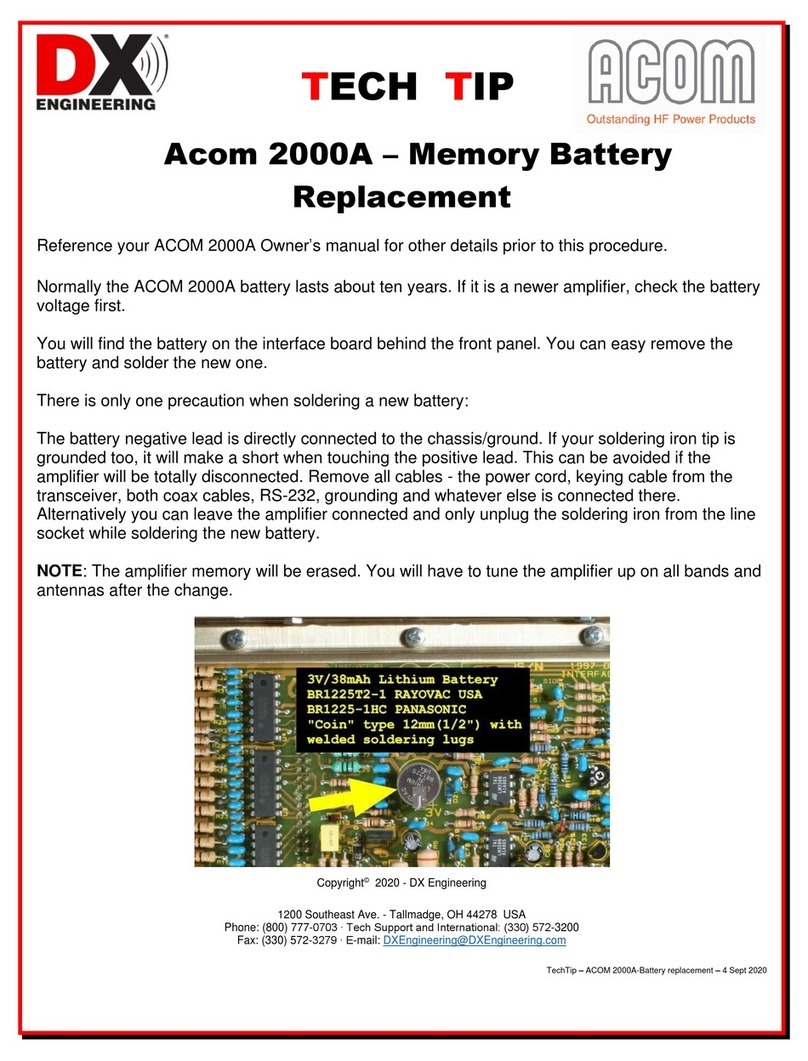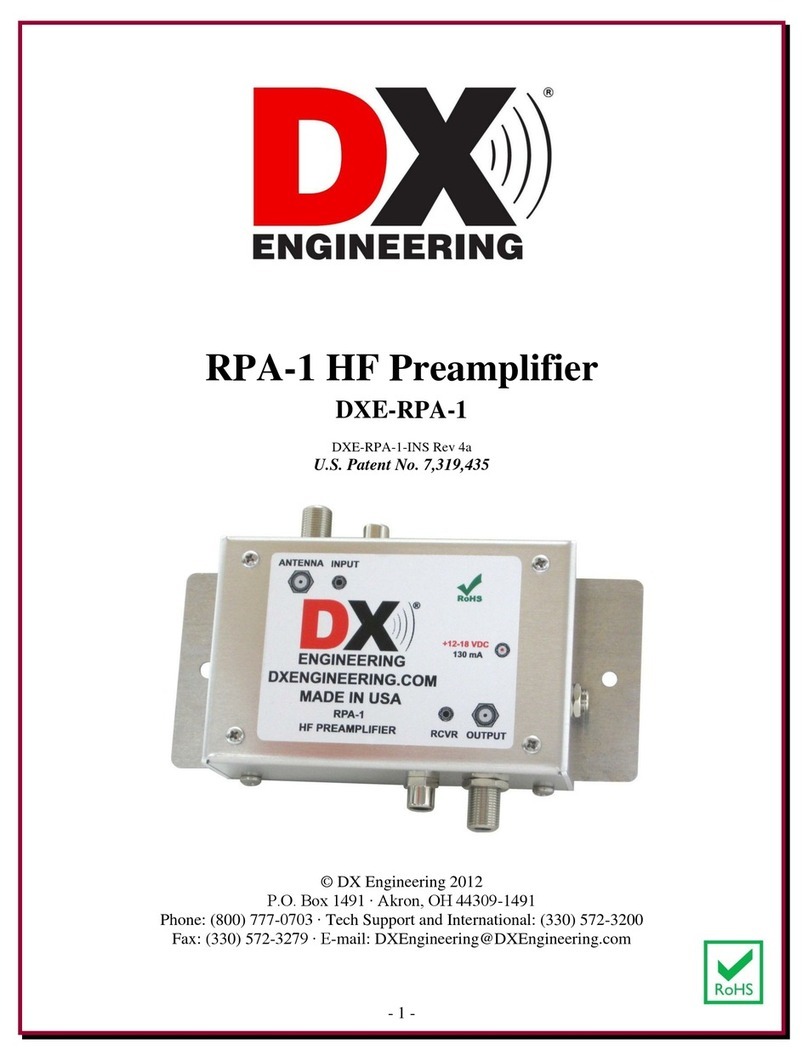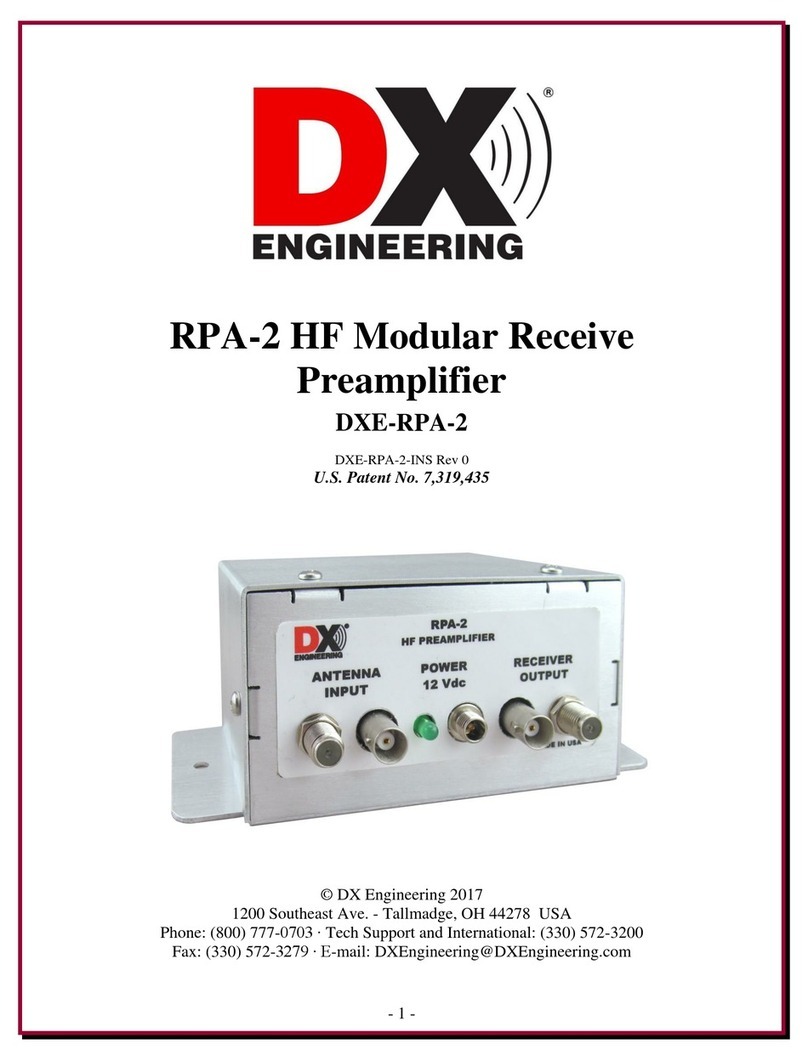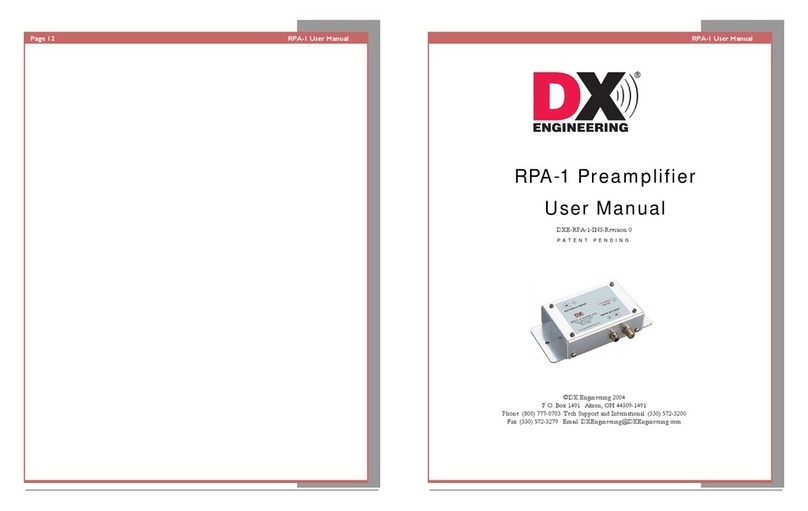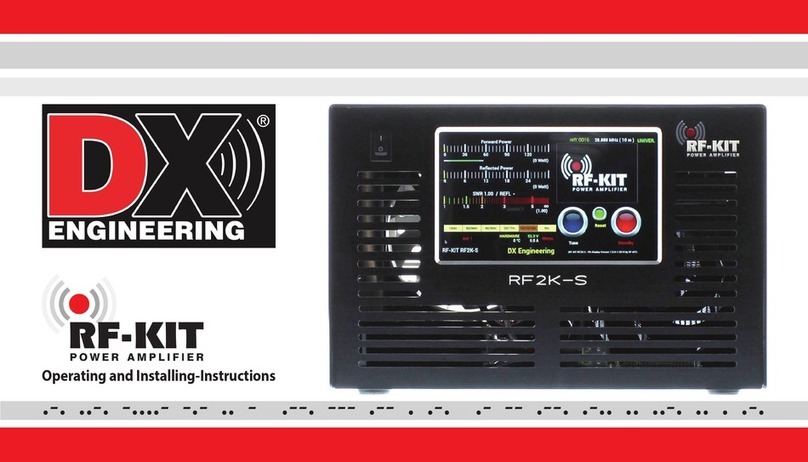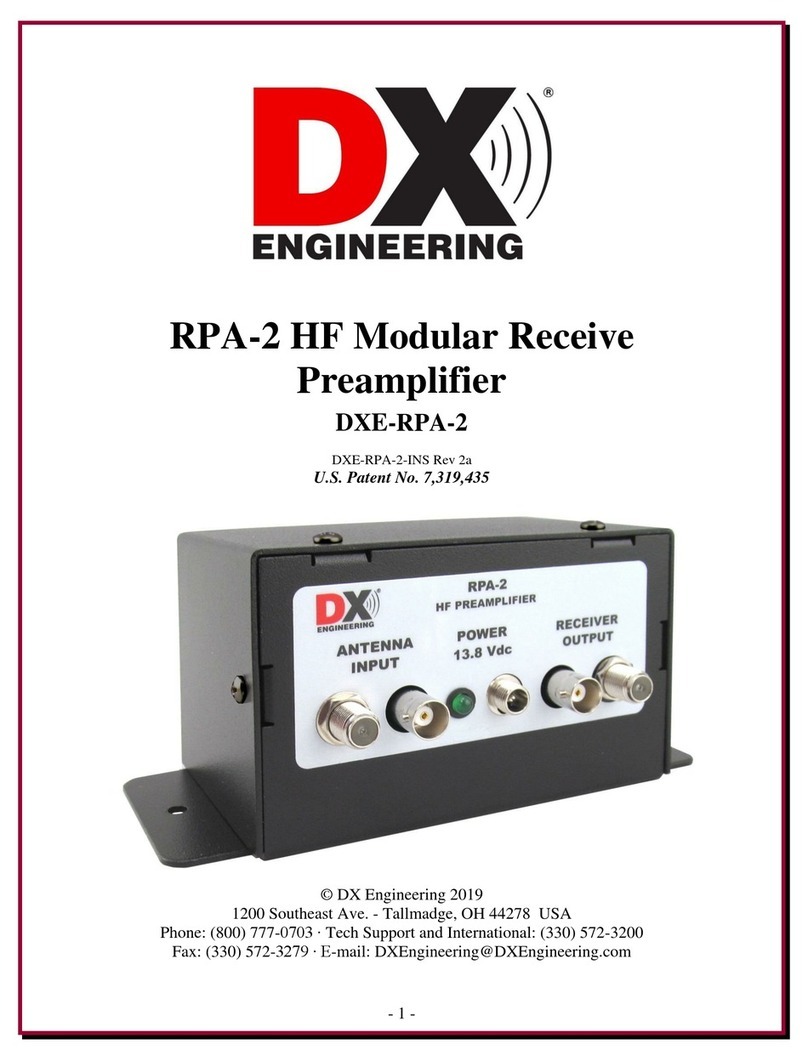
- 8 -
DXE-UT-KITF - F-Connector Coaxial Cable Prep Tool Kit
This cost-saving kit provides a handsome, convenient carrying case complete with the
DX Engineering F-6 coaxial cable prep tools and accessories. It features a rugged,
lockable enclosure fitted with a precut foam insert with a home for each tool.
The DXE-UT-KITF kit provides the case complete with the following:
DXE-CPT-659- Stripping Tool for RG-59/F-6 size cable w/extra blades
DXE-SNS6-25 - Snap-N-Seal Watertight F Connectors - qty. 25 pcs
DXE-SNS-CT1 - SNS Connector Compression Tool
CNL-911 - Coaxial Cable Shears
DXE-CIT-1 - F Connector Tightening Tool
This unit is RoHS (Reduction of Hazardous Substances) compliant. The
components, including the solder used are all lead free. If you decide to do any
modifications or internal repairs, you should use only lead free solder and lead free
soldering tools. Lead free solder melts approximately 100 degrees higher than the
old leaded solder, so you may need to upgrade your current soldering system.
Technical Support
If you have questions about this product, or if you experience difficulties during the installation, contact DX Engineering at (330)
For best service, please take a few minutes to review this manual before you call.
Warranty
All products manufactured by DX Engineering are warranted to be free from defects in material and workmanship for a period of one
(1) year from date of shipment. DX Engineering’s sole obligation under these warranties shall be to issue credit, repair or replace any
item or part thereof which is proved to be other than as warranted; no allowance shall be made for any labor charges of Buyer for
replacement of parts, adjustment or repairs, or any other work, unless such charges are authorized in advance by DX Engineering. If
DX Engineering’s products are claimed to be defective in material or workmanship, DX Engineering shall, upon prompt notice
thereof, issue shipping instructions for return to DX Engineering (transportation-charges prepaid by Buyer). Every such claim for
breach of these warranties shall be deemed to be waived by Buyer unless made in writing. The above warranties shall not extend to
any products or parts thereof which have been subjected to any misuse or neglect, damaged by accident, rendered defective by reason
of improper installation, damaged from severe weather including floods, or abnormal environmental conditions such as prolonged
exposure to corrosives or power surges, or by the performance of repairs or alterations outside of our plant, and shall not apply to any
goods or parts thereof furnished by Buyer or acquired from others at Buyer’s specifications. In addition, DX Engineering’s warranties
do not extend to other equipment and parts manufactured by others except to the extent of the original manufacturer’s warranty to
DX Engineering. The obligations under the foregoing warranties are limited to the precise terms thereof. These warranties provide
exclusive remedies, expressly in lieu of all other remedies including claims for special or consequential damages. SELLER
NEITHER MAKES NOR ASSUMES ANY OTHER WARRANTY WHATSOEVER, WHETHER EXPRESS, STATUTORY, OR
IMPLIED, INCLUDING WARRANTIES OF MERCHANTABILITY AND FITNESS, AND NO PERSON IS AUTHORIZED TO
ASSUME FOR DX ENGINEERING ANY OBLIGATION OR LIABILITY NOT STRICTLY IN ACCORDANCE WITH THE
FOREGOING.
©DX Engineering 2017
DX Engineering®, DXE®, DX Engineering, Inc.®, Hot Rodz®, Maxi-Core®, DX Engineering THUNDERBOLT®, DX Engineering
Yagi Mechanical®, EZ-BUILD®, TELREX®, Gorilla Grip®Stainless Steel Boom Clamps, Butternut®, SkyHawk™, SkyLark™,
SecureMount™, OMNI-TILT™, RF-PRO-1B®, AFHD-4®are trademarks of PDS Electronics, Inc. No license to use or reproduce
any of these trademarks or other trademarks is given or implied. All other brands and product names are the trademarks of their
respective owners.
Specifications subject to change without notice.
